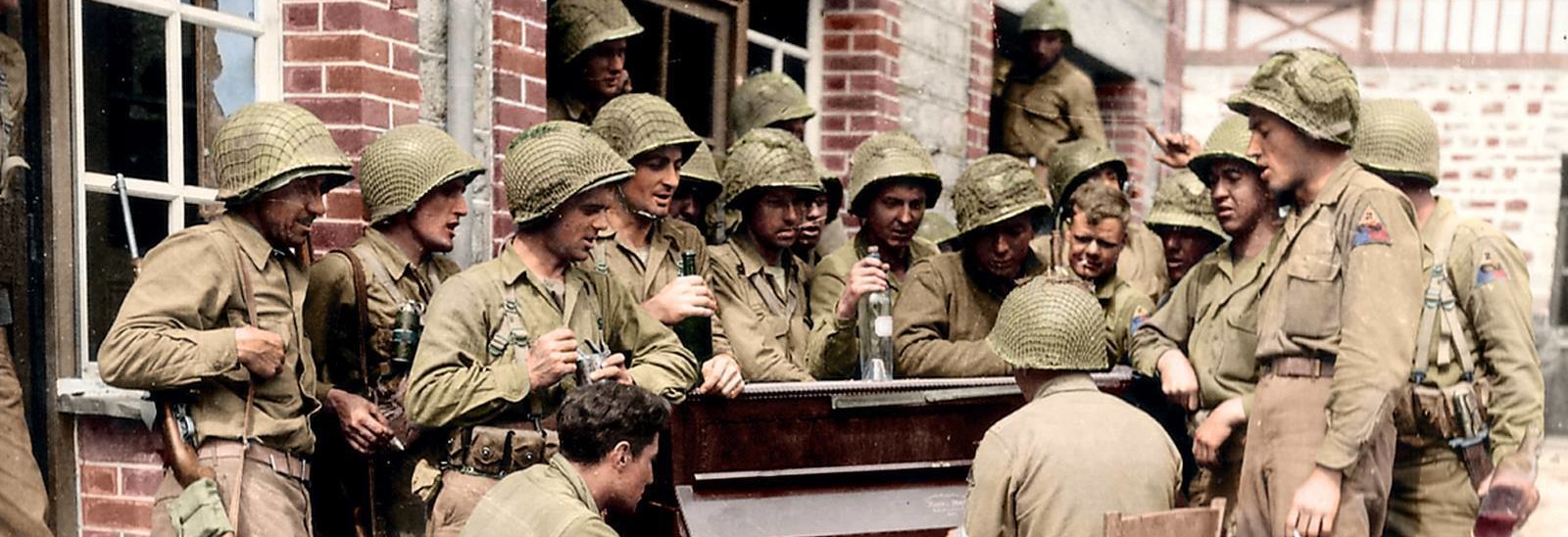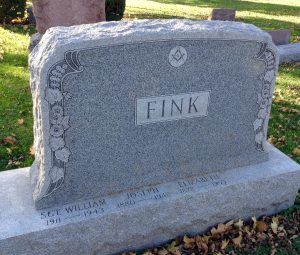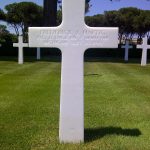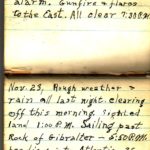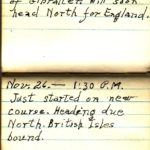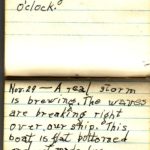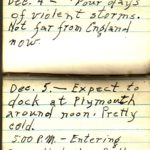The capture of Palermo ended the fighting in western Sicily. A short campaign, the division with its aggressiveness and speed as well as the lack of enthusiasm with which the enemy defended their rocky island captured its objective ahead of schedule, and the troops that took an active part in the campaign moved into a rest and training area to the east of Palermo. Companies “A” and “B” of the Engineers entered an olive grove bivouac west of Capaci 26 July, where a provisional battalion was set up under Lt Col. John Chambers.
During the next month companies were busy removing and exploding mines from numerous minefields – one of more than 700 mines being lifted by Co. “A” on the Capaci Torretta road. Road reconnaissance, the preparation of road bypasses, the construction of PW cages and assistance in preparing & divisional cemetery were among the tasks assigned. S/Sgt William Fink of Co. “B” was accidently killed when a captured German motorcycle he was riding threw him under a heavy truck near Corleone on 12 August. Swimming was enjoyed off the coast during the afternoons, for warm weather remained as Autumn grew older.
(Edit 1: This is the Gravestone of Staffsergeant William Fink who was accidently killed while driving a caputerd German Motorcycle on august 12, 1943)
In the mean time, Bn Hq and Companies “C” and “D” had remained in North Africa as part of the divisional reserve during the Sicilian fighting. Leaving the quads from the line companies near Port aux Poules under the command of Major Swiech and Capt. Bentley, the headquarters elements marched between July 15 and 20 to a bivouac area six miles southwest of Bizerte, Tunisia. Both sections were expecting to load onto ships any day to join the division in Sicily but the campaign ended with them still among the“Arabs”. Considerable time was spent in athletics. Both sections were near the beach, so swimming was enjoyed daily in the Mediterranean. In the divisional softball league that was organised in Tunisia the Engineer team, managed by 1st Lt. Novotny, won the championship and celebrated with a feast in the splendour of a famous resort at Bone. Finally on 30 Sept. the forward detachment packed up and began the match back to Algeria.
“05-2021”
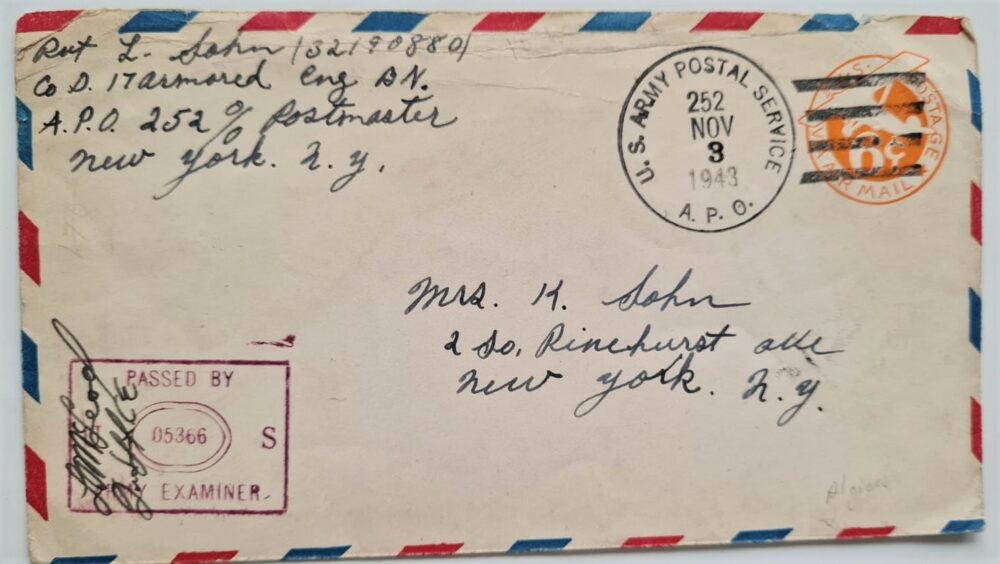
Letter send on November 3rd, 1943, Private L (Leo) Sohn, (ASN 32190880) D Company, 17th Armored Engineer Battalion. (Courtesy: Private Collection M. Brandjes)
Transcribed Enveloppe:
Pvt L. Sohn 32190880
Co D 17 Armored Eng BN.
A.P.O. 252 % Postmaster
New York. N.Y.Mrs. H Sohn
2 So Rinehurst Ave
New York. N.Y.
(Edit 2: on september 30, 1943 Private First Class Frederick J Hartig died as a non-battle)
On 22 September Lt Col. Chambers returned to 7th Army as executive to the Army Engineer, and Major Correll assumed command of the battalion. Capt. Hereford left Co. “B” 27 Sept to become Bn Adjutant, being replaced by 1st Lt Hazzard.
A spot of romance was Injected into the period by Capt. Bentley, whose sweetheart was a nurse with an Evacuation Hospital that moved into a nearby area. They were married during the Autumn, and shorty afterwards he was transferred to brig Gen. Kingman’s section to assist in equipping and training the Free French troops. The Bn also received a new commander, Lt Col T. DeForest Rogers, assigned 26 October from the Mediterranean Base Section. M/Sgt John Hamilton, Bn Supply Sergeant, was the first EM of the unit to receive a direct commission, becoming a 2nd Lieutenant on 1 Oct, and short by afterwards being assigned to Co. “C”. Lt Novotny replaced Capt. Bentley as CO for Co. “C”, Capt. Sampson became CO of Hq Co, Lt McMahan was made CO of Co. “A” and Capt. Jones was placed on the staff as S-3 in other changes that were made prior to departure for the ETO. On 12 November the units in Africa began loading en ships, Bn Hq going aboard the British liner, H.M.T. “Orontes” at Oran. In Sicily the Engr companies shipped on the USAT “Henry Gibbons” 8 November at Palermo, and the convoys set out for England.
(Edit 1: Diary that Corporal Samuel James Larson kept for a short period of time on the journey by ship from the Mediterranean Sea to England prior to D-Day, read more about Corporal Samuel James Larson and his Diary here)

Diary that Corporal Samuel James Larson kept for a short period of time on the journey by ship from the Mediterranean Sea to England
Diary from Corporal George H Larson from November 20, 1943 to December 5, 1943
(Transcribed by Bas Dekker)
November 20, 1943. Oran Algiers
Boarded LST 382 11AM. Bunk number 148 port side amidships. Sail tomorrow destination unknown. Probably England. Haven’t had any mail for 2 weeks. Haven’t been allowed to write for 2 weeks. The ship bunk is like a feather bed after 11 months of sleeping on the ground. Glad to get out of Africa.
November 21st 1943, Oran Harbor
Anchored outside breakwater. Scheluded to leave this evening. LST means Landing Ship Tank.
November 22nd. 7:15 AM leaving Oran. Rough Weather. Headed west towards Gibraltar. Joined convoy from Sicily 11:30 AM.
7:00 PM General Quarters alarm. Gunfire and flares to the east. All clear 7:30 PM
November 23rd. Rough weather & rain all last night. Clearing off this morning. Sighted land 1:00 PM. Sailing past Rock of Gibraltar – 5:50 PM Heading into Atlantic. 38 ships in convoy. Don’t know where we are going yet, hope it’s home.
November 24.
9 AM – sailing merrily along. Averiging about 6 miles per hour. Calm sea sighted another convoy 1:30 PM Joined convoy 5:00 PM. Sea getting rougher. About 60 ships now.
November 25 Thanksgiving day. Sea pretty rough pitching + tossing. 1:00 PM. Had a swell dinner, Turkey and all the trimmings. Best meal since I left States. 6 PM Sea still rough. Can hardly walk around. Our ship has coffin corner position in convoy. Our position about 500 miles West of Gibraltar. Will soon head North for England.
November 26 1:30 PM just started on new course. Heading due North. British isles bound.
November 27 8:00 AM sighted 2 English patrol bombers. General Quarters alarm at 10:15 AM. Subs in the vicinity. 2:30 PM Still alerted changed course to Northwest. Storm Brewing. Getting colder.
November 28 Hot time last night. First General Quarters alarm at 11:50 PM. Subs contacted. All clear at 12:30 AM. Second General Quarters alarm at 03:00 AM. Subs try to get in again. No dice all clear 4:15 AM. Third General Quarters alarm 7:00 AM All clear 7:30 AM. 3:00 PM One of our escort vessels reports that she sank a sub last night about 12 O’clock.
November 29 A real storm is brewing. The waves are breaking right over our ship. This boat is flat bottomed and not made for ocean travel. It’s really taking a beat today. 4:00 AM Sea calming down a bit.
November 30 Sea is almost back to normal. Have about 6 more days of sailing before we expect to see land.
December 1 Running into another storm. This one coming in from the west. 5:30 PM Our 13 LST’s split from rest of convoy. Now headed for invasion point in Southeast England. Only 80 miles from France.
December 2 Still fighting a bad storm. Mountainous waves breaking right over ship.
December 4 Four days of violent storms. Not far from England now.
December 5 Expect to dock at Plymouth around noon. Pretty cold. 5:00 PM Entering Plymouth harbor. Pretty big town. Several British battleships and cruisers anchored here. Tied up to bouy number 2 inner channel at 6:35 PM.
